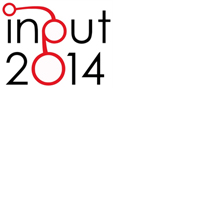The Energy Networks Landscape. Impacts on Rural Land in the Molise Region
Abstract
The paper concerns the study of the energy infrastructure that have the most impact on rural land. The analysis focuses on the systems for wind power and ground–mounted photovoltaic plants.
The case study is the Region of Molise, in Southern Italy. This Region is an emblematic case because it has a significant number of installations as seen in relationship with the whole national territory. The case becomes even more special with reference to local guidelines that have undergone successive formulations, precisely in relation to the installation in specific areas of the Region. The study analyzes current national and regional rules and it proposes a methodology to support Local Authorities especially in relation to the definition of landscape quality aims, that the new Regional Landscape Plan must provide.
Downloads
References
Casarotto, A., De Guio, A., Ferrarese, F. (2009), “Action Gis: un modello predittivo del movimento antropico in un paesaggio antico. Il caso di studio della Val d’Alpone (VR)”, Archeologia e Calcolatori, 20, 301-segg.
Cialdea, D., Maccarone, A., Sollazzo, A. (2010), “Wind energy and landscape in Molise – Legislation, Incentives and Problems”, Proceedings of the International Conference on Renewable Energies and Power Quality (ICREPQ’10), Granada (Spain), 23rd to 25th March, Paper n. 493.
Cialdea, D., Maccarone, A., Sollazzo, A. (2010), “Wind energy in Molise. Guidelines for wind power farms in landscape”, Proceedings of V Worshop APDR Associação Portuguesa para o Desenvolvimento Regional, Casos de Desenvolvimento Regional, 08/02/2010, Universidad de Coimbra, Sessão 11 Paper 01037.
Cialdea, D., Maccarone, A. (2012), “Territory diachronic maps for the Regional Landscape Plan”, in Campagna M. et al. (eds.), Planning support tools Policy Analysis, Implementation and Evaluation, FrancoAngeli, Milano, 386-398.
Cialdea, D. (2012), “A new landscape planning approach in areas with a strongly rural matrix”, in Campagna M. et al. (eds.), Planning support tools Policy Analysis, Implementation and Evaluation, FrancoAngeli, Milano,453-464.
Cialdea, D., Maccarone, A. (2013), “Il Piano Paesaggistico Regionale e la mobilità sostenibile”, in Urbanistica per una diversa crescita. Aporie dello sviluppo, uscita dalla crisi e progetto del territorio contemporaneo. Atti della XVI Conferenza Nazionale SIU – Società Italiana Urbanisti – Napoli, 9-10 Maggio, Planum. The Journal of Urbanism, 27(II).
Cialdea, D., Quercio, N. (2014), “An overview on the Molise (Italy) renewable energy law: the conflict between the landscape protection and the territory management”, International Conference on Renewable Energies and Power Quality (ICREPQ’14), Cordoba (Spain), Renewable Energy and Power Quality Journal (RE&PQJ), ISSN 2172-038 X, No.12, April 2014.
Di Bene, A., Scazzosi, L. (eds.) (2006), Gli impianti eolici: suggerimenti per la progettazione e valutazione paesaggistica, Gangemi, Roma.
Di Bene A., D’Eusebio, L. (2007), Paesaggio agrario. Una questione non risolta, Gangemi, Roma.
Empler, T, Bianconi, F., Bagagli, R. (2006), Rappresentazione del paesaggio. Modelli virtuali per la progettazione ambientale e territoriale. DEI, Roma.
Steiner, F.(2004), Costruire il paesaggio. Un approccio ecologico alla pianificazione, II ed: McGraw-Hill, Milano.

Copyright (c) 2014 Tema. Journal of Land Use, Mobility and Environment

This work is licensed under a Creative Commons Attribution 4.0 International License.
Authors who publish in this journal agree to the following:
1. Authors retain the rights to their work and give in to the journal the right of first publication of the work simultaneously licensed under a Creative Commons License - Attribution that allows others to share the work indicating the authorship and the initial publication in this journal.
2. Authors can adhere to other agreements of non-exclusive license for the distribution of the published version of the work (ex. To deposit it in an institutional repository or to publish it in a monography), provided to indicate that the document was first published in this journal.
3. Authors can distribute their work online (ex. In institutional repositories or in their website) prior to and during the submission process, as it can lead to productive exchanges and it can increase the quotations of the published work (See The Effect of Open Access)
